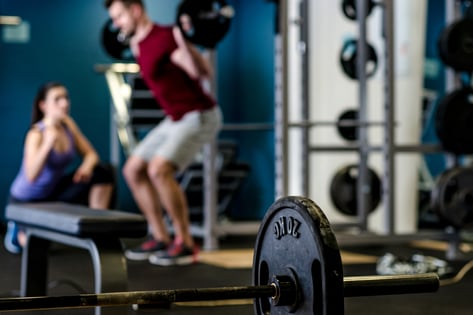 If you are an athlete, powerlifter, or just a person who loves to see progress, you might want to try out cluster set training. This is an advanced type of training designed to get you stronger faster than traditional set training.
If you are an athlete, powerlifter, or just a person who loves to see progress, you might want to try out cluster set training. This is an advanced type of training designed to get you stronger faster than traditional set training.
Traditional Set Training and Cluster Set Training Defined
Traditional set training is typically what everyone at the gym does when lifting weights: you perform a set of continuous repetitions and then rest. An example of this would be Barbell Back Squatting 3 sets for 8 reps.
Cluster set training is performing the same amount of sets and reps, but instead of continuous repetitions, you perform 1 or 2 reps and then rest, then repeat the same reps until you get to your desired rep goal. An example of this would be Barbell Back Squatting 3 sets for 8 reps, but those 8 reps are divided into clusters of 1 or 2 reps followed by a short rest period. You also typically want to rest 15 to 30 seconds between each cluster to get the desired effect.
Why Cluster Set Training Works So Well for Strength and Power
The reason cluster set is so beneficial for strength and power gain is that it allows you to continue to train at close to max or max effort longer than traditional set training would. The reason is that you get short bouts of rest in between your set, which decreases repetition fatigue. Another reason it works is that you are increasing your motor unit synchronization and decreasing your reciprocal inhibition, which allows you to get stronger. Those last two are neural mechanisms that occur during training, especially max effort training.
How to Add Cluster Set Training to Your Workout
The best way to implement this in your training is to use cluster set training with your main lifts: Power Clean, BB Back Squat, Bench Press, and Deadlift. One thing to note is that this type of training is designed to improve strength and power gains and not necessarily hypertrophic gains (an increase in muscle mass). If your main goal is to increase muscle mass, I would recommend sticking to a traditional set training method because this has been proven to increase those effects more so than the cluster set training method.
Get Help from NIFS
Give this type of training a shot and see whether your numbers increase! If you have any questions about cluster set training, you can reach out to me at pmendez@nifs.org and I will gladly answer any questions or concerns. Last thing here is that this is an advanced type of training and should be done by advanced lifters. If you are a novice lifter, I would recommend sticking to traditional set training until you are ready for this.
This blog was written by Pedro Mendez, CSCS, FMS, Health Fitness Instructor and Strength Coach at NIFS. To learn more about the NIFS bloggers, click here.

